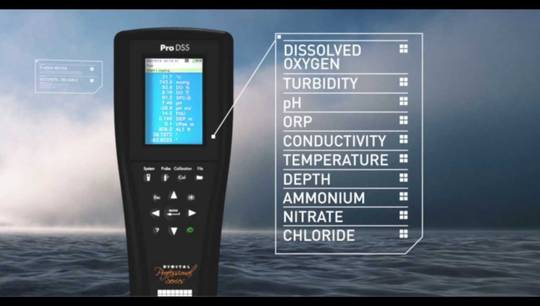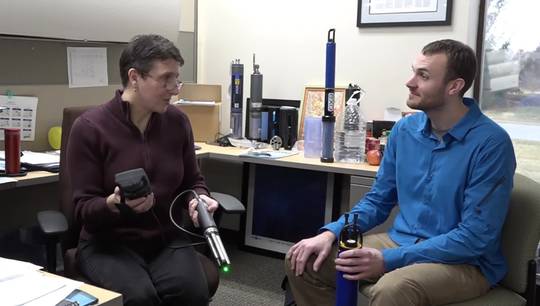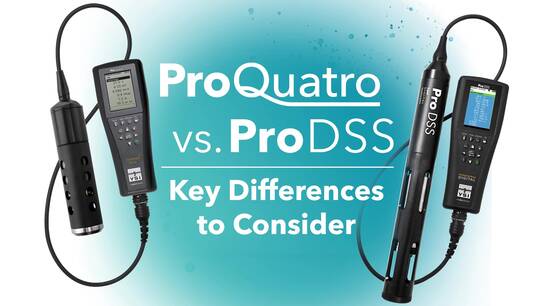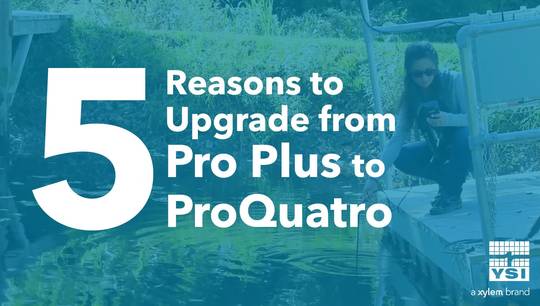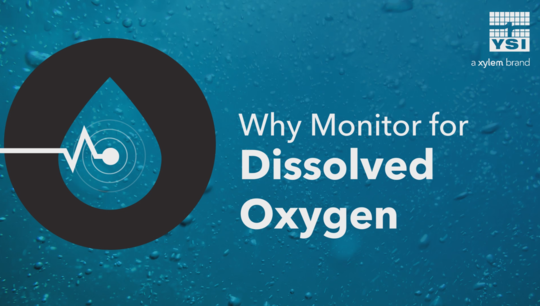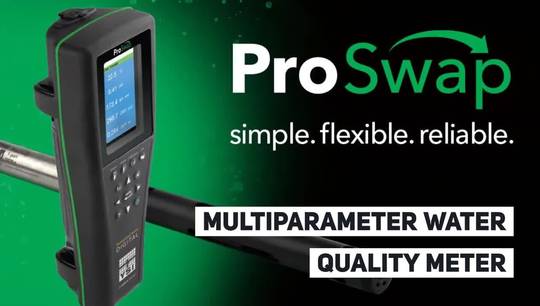Clean Water Act Tour | Cleveland Water Alliance
Stephanie Smith: A fire on the Cuyahoga in 1969 came together with a number of other events that eventually led to the Clean Water Act. We're here to talk about that historical event with our guest, Ebie Holst of the Cleveland Water Alliance. So, Ebie, thank you so much for joining us today. So, first of all, tell us what the Cleveland Water Alliance is, and tell us a little bit about your role in it.
Ebie: So, the Cleveland Water Alliance is a nonprofit organization here in Cleveland, and we were founded in 2014 to focus on economic development through the water economy. And this is a great place for us to actually anchor our work because of the history that we're here to talk about today.
Stephanie Smith: That is awesome. And we are here on the beautiful Cuyahoga River, which wasn't always so beautiful. We're here because, in 1969, there was a fire on the river. Wasn't the first, and probably wouldn't even be the last, but it was probably the most important one because it really got national attention. So, tell us a little bit about that history and how it affected the people here in Cleveland.
Ebie: So, the Cuyahoga River, really, for decades leading up to that fire had been used as kind of a central place for industry to dispose of their waste. And it also was kind of a wastewater flow-through for a lot of the sewer systems as well in the outer suburbs. And as a result, because of the types of industries we had here in Cleveland, as a result, we had some really heavy-duty pollution in the water, including oil slicks. Oil slicks, because Standard Oil, from John D. Rockefeller's founding of Standard Oil here in Cleveland, was a really key part of the contamination of the water that, in turn, ended up being flammable when a spark from a nearby train actually dropped onto the water and set the fire.
So, one of the things that...you know. When we think about the 1969 fire, which you're right, it was not the first one, and it wasn't even the largest one, but it was a catalyst because prior to the 1969 fire, a couple of things had started sort of putting things in motion around environmentalism. That included "Silent Spring," the publishing of "Silent Spring." It also included a really significant oil spill in the California area that actually got a lot of publicity. So, that was sort of primed around public attention. And as that public attention started to swell there, we had this fire, and we also had a mayor in Cleveland who was very sensitized to the opportunity for taking steps for environmental cleanup.
Stephanie Smith: So, all of these events came together in 1969, and a lot of that is what led to the Clean Water Act, which didn't get passed until 1972, right?
Ebie: Right.
Stephanie Smith: So, when that legislation did go through, how did Cleveland take advantage of that? What were some of the first early steps that that act enabled for the restoration to this beautiful river that we see behind us?
Ebie: Well, there were a couple of steps that actually had the event here in Cleveland helped to shape the Clean Water Act. So, I mentioned that we had a very forward-thinking mayor at the time. His name was Mayor Carl Stokes. The day after the fire on the Cuyahoga, he brought press down at the site of the Cuyahoga River fire. And that press captured some of the story about, you know, the industrialization and how we needed to take remediation steps, and it fit into that narrative that was bubbling up.
Well, Carl Stokes ended up actually testifying before the U.S. Senate in 1970, and his brother Louis Stokes ended up... I'm sorry, he testified in front of Congress, and Carl Stokes, the mayor, testified in front of the Senate and actually promoted the story of the need for environmental intervention at the federal level. And it's in part because of that that, in fact, we saw the founding of the EPA and the Clean Water Act in 1972. And also, in 1972, once it was passed, we also saw the creation of the Northeast Ohio Regional Sewer District.
Stephanie Smith: NEORSD.
Ebie: NEORSD.
Stephanie Smith: Very active, yeah.
Ebie: That's right. And then also the Ohio EPA. So, all of these things kind of came together as that was coalescing in D.C. And some of the work of Mayor Stokes also, in turn, was very pivotal in getting funding to the Cleveland area to help remediate the Cuyahoga River. And that vehicle for much of that remediation actually occurs through the Ohio EPA and through the Sewer District.
Stephanie Smith: So fantastic story of community-level activism having that national-level impact.
Ebie: Exactly.
Stephanie Smith: It's really an amazing connection. And so, today, how is this community still engaging with the Clean Water Act? What's the role of the Clean Water Act in maintaining the river today?
Ebie: Well, the Clean Water Act really set out a range of regulations around, for example, industry and what industry could dispose of, or how water had to be cleaned before it was released back into the natural environment. The Sewer District today plays a key role in that. So, it's through the Sewer District that industry is permitted for their affluent and what can be in their affluent and what needs to be cleaned through the Sewer District before it's then released.
And in part, some of the regulations around industry changed the landscape of industry here, overall. So, you know, there are some industries that simply could not keep up with the regulations and moved on, and there are other industries that we still retained here but they actually operate a much cleaner shop than they used to decades ago.
Stephanie Smith: Thankfully.
Ebie: Thankfully.
Stephanie Smith: So, the Cleveland Water Alliance really is more heavily focused on Lake Erie. So, how important is the health of the Cuyahoga River to Lake Erie?
Ebie: Well, we have a number of rivers that actually pour into Lake Erie, and the Cuyahoga River actually is one of the key ones that because of the history of this river that serves as an ongoing symbol for how clean our waterways are overall as well as Lake Erie. Cleveland Water Alliance is focused not primarily on Lake Erie but on all of the water and the water economy surrounding the entire Lake Erie watershed is kind of our focus. And so, some of the key things that we are working on to kind of move us on into the future and maintain sort of a sustainable water quality focus is we are putting in place a telecommunications broadband sort of backbone over Lake Erie and the watershed to enable real-time automated monitoring of water quality. And so we're very excited. We have also purchased over 100 different IoT devices to assist in monitoring water quality across the Lake Erie watershed, and we are inviting companies from all over the world to come try all their technologies here.
Stephanie Smith: Wow. That's amazing. Now, this technology infrastructure you're building, is that part of what you guys refer to as the blue economy? I've heard you talk a lot about the water economy. You know, connect the health of the river to that water economy and the health of the city.
Ebie: So, when we talk about putting sort of this telecommunications backbone in place and the IoT devices that we're purchasing, what we tend to call that is our Smart Watershed Initiative. The blue economy, in general, when you hear people talk about the blue economy, certainly in federal agencies and so forth, they're usually talking about the ocean economies. And because we are on the freshwater here in the Great Lakes, we tend to refer to it as the water economy instead of the blue economy. But really, it makes sense to kind of converge the two. When we're talking about a water economy or blue economy, generally, we're talking about all kinds of different things in which you have human interactions with water.
So, a number of industries have really high dependence on water, you know, for power generation. In many instances, power generation is dependent on the use of water. Also, you know, the creation of textiles, the creation of metals processing, polymers, chemicals, pharmaceuticals, all of these are industries that require water in order for those industries to exist. But it also means the various different types of technologies and expertise that ensure that our water remains safe and clean and usable for community purposes as well as recreational purposes because that's what we need to do in order to sustain a healthy environment.
Stephanie Smith: And I love how that connection is both ways. A lot of times when we think about the Clean Water Act, we're thinking about what people are putting into the water and protecting the water from that. But it's also about making the water usable. And so the city and the industries that use the water, the people that use it recreationally, as we've seen behind us, they get the real benefit out of what the Clean Water Act has given us.
Ebie: That's right.
Stephanie Smith: So, I think that's a wonderful story. I thank you so much for joining us to tell us about it.
Ebie: Well, I am thrilled to be here.
Stephanie Smith: And very, very interested in seeing what the Cleveland Water Alliance continues to do to protect that legacy.
Ebie: Thank you.
Stephanie Smith: Thank you so much.
Ebie: Thank you for having me.
Stephanie Smith: Yeah, thanks. So, as we learned, the Cuyahoga has come a long way in 50 years, and it owes a lot of that to the Clean Water Act. In fact, one part of Ebie's story that I want to leave you with is her story about Mayor Stokes, who really was a water hero for the Cuyahoga. We'd like you to think about water heroes that you might know, and on our website, you can nominate someone to be recognized as a water hero. Who do you know that is out there fighting the good fight, really upholding the spirit of the Clean Water Act? We invite you to help us acknowledge that person. They might win some prizes, but they'll definitely get the recognition they deserve.
So, with that, we're off to our next stop on our summer tour where we're exploring the past, present, and future. We'll talk about a present problem and one very near and dear to my heart, harmful algal blooms. We're off to Lake Erie in Toledo, Ohio. So, join us.

